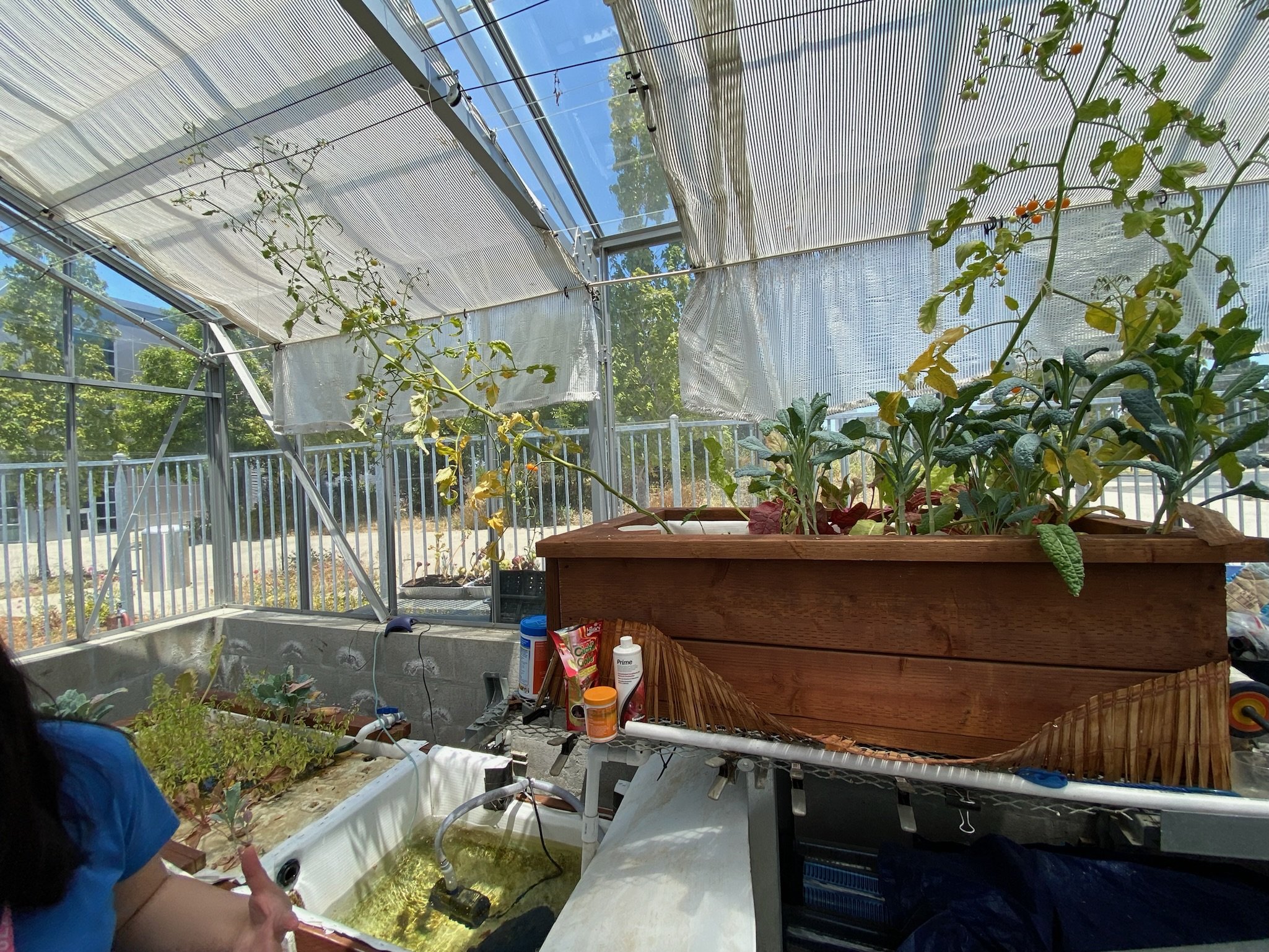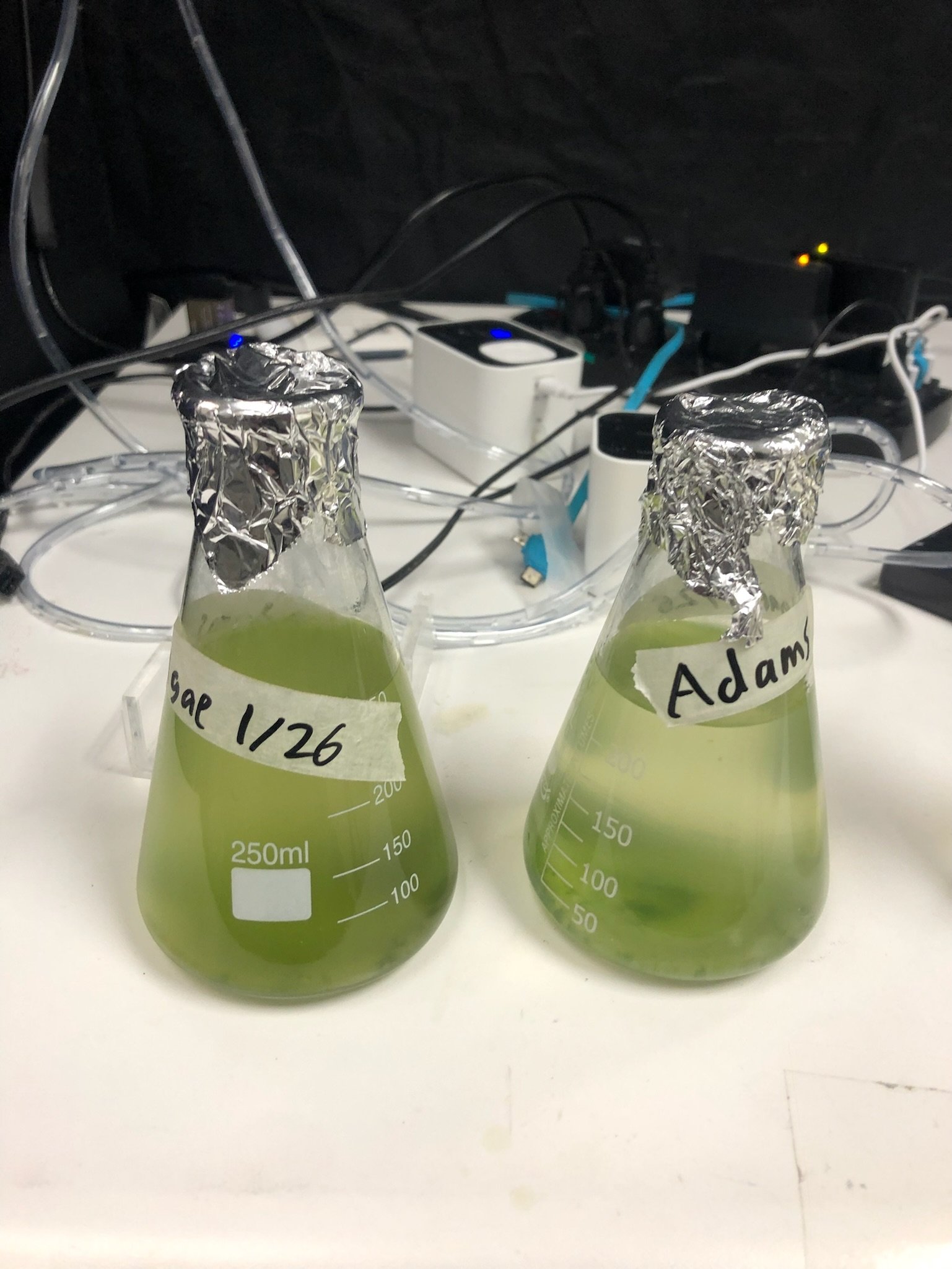Aquaponics
At Ohlone, our greenhouse is equipped with a small-scale, fully functioning aquaponics system. When the professor who runs the system took a sabbatical, I was tasked with maintaining the system.
Our aquaponics system takes the ammonia from the fish feces and transports it, through a pipe system, to a plant trough. There, special clay beads coated with nitrogen fixing bacteria, convert the ammonia into nitrogen that the plants use as food. The unused water is flushed back into the tank. As a result, the system is fully circular, meaning it is completely sustainable! Additionally, since there is so much nitrogen available for the plants, they grow at a rapid rate, creating leaves that are softer because the growth is so quick. This means the plants we grow using the system are incredibly fresh and nutrient dense!
Eco-Friendly Batteries
As the threat of fossil fuels to our environment grows, the world is looking towards renewable sources of energy. More recently, there has been a heightened focus on bioelectricity, which involves capturing the energy generated by the photosynthetic processes of plants and bacteria. The main contender for this new age of bioelectricity is the algae battery.
These new environmentally friendly batteries will someday be a cleaner source of energy, furthering ourselves from using up gasoline and other harmful sources of energy.
In order to create a sustainable energy source, we are using Synechocystis PCC6803 algae in a Al-BPV system. Synechocystis is one of the most efficient algaes for producing energy, which is why we are researching the amount of energy it can produce and how long it can sustain a battery.






